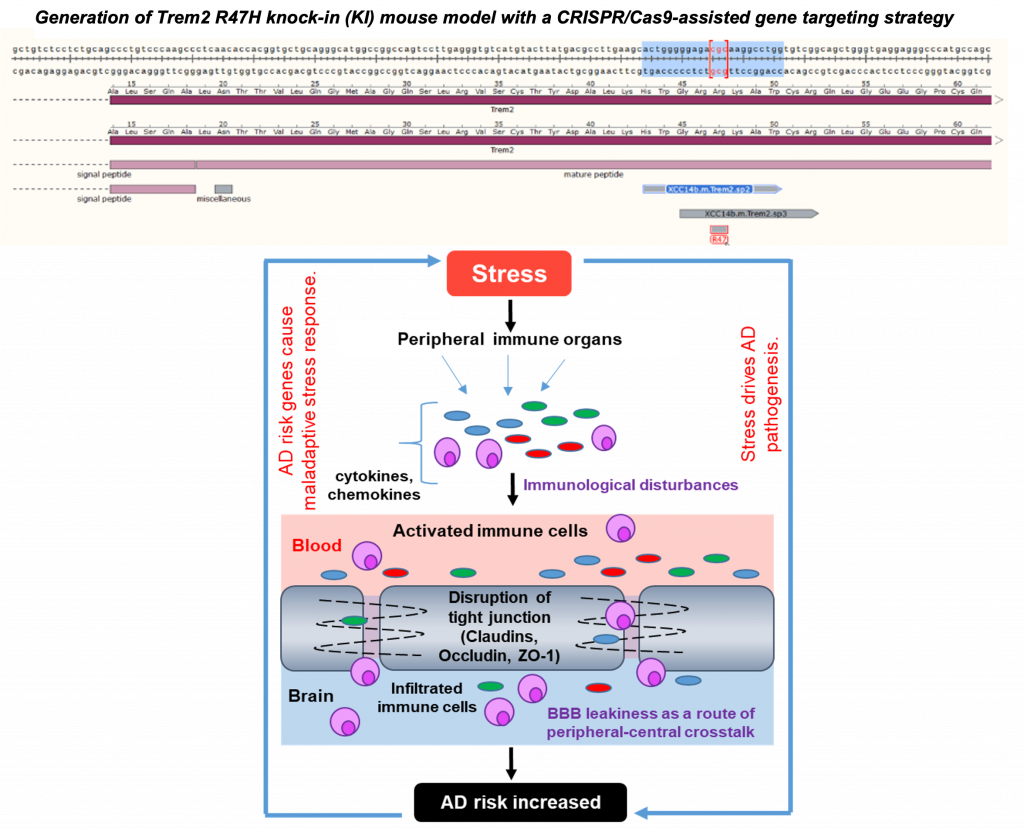Alzheimer’s disease (AD) is a multifactorial disease driven by a complex interaction between genetic and environmental factors (such as chronic stress). With the continued failure of AD clinical trials, there has been a spirited push towards gaining better insights into the disease pathomechanisms for finding the ‘right’ pathological substrates to target at the ‘opportune’ time, i.e. at early stages of the disease. However, a complete understanding of the etiology of AD will require an understanding of the relevant genetic risk factors, the relevant environmental risk factors, and the ways in which these two risk factors interact. Dr. Rahim’s work is aimed at deciphering gene-environment interactions in understanding AD onset and progression. By employing CRISPR/Cas9, we have generated a knock-in (KI) mouse model expressing R47H variant in the endogenous mouse Trem2 gene that is only expressed on immune cells of myeloid origin, to examine gene-environment interplay that may drive AD vulnerability.

